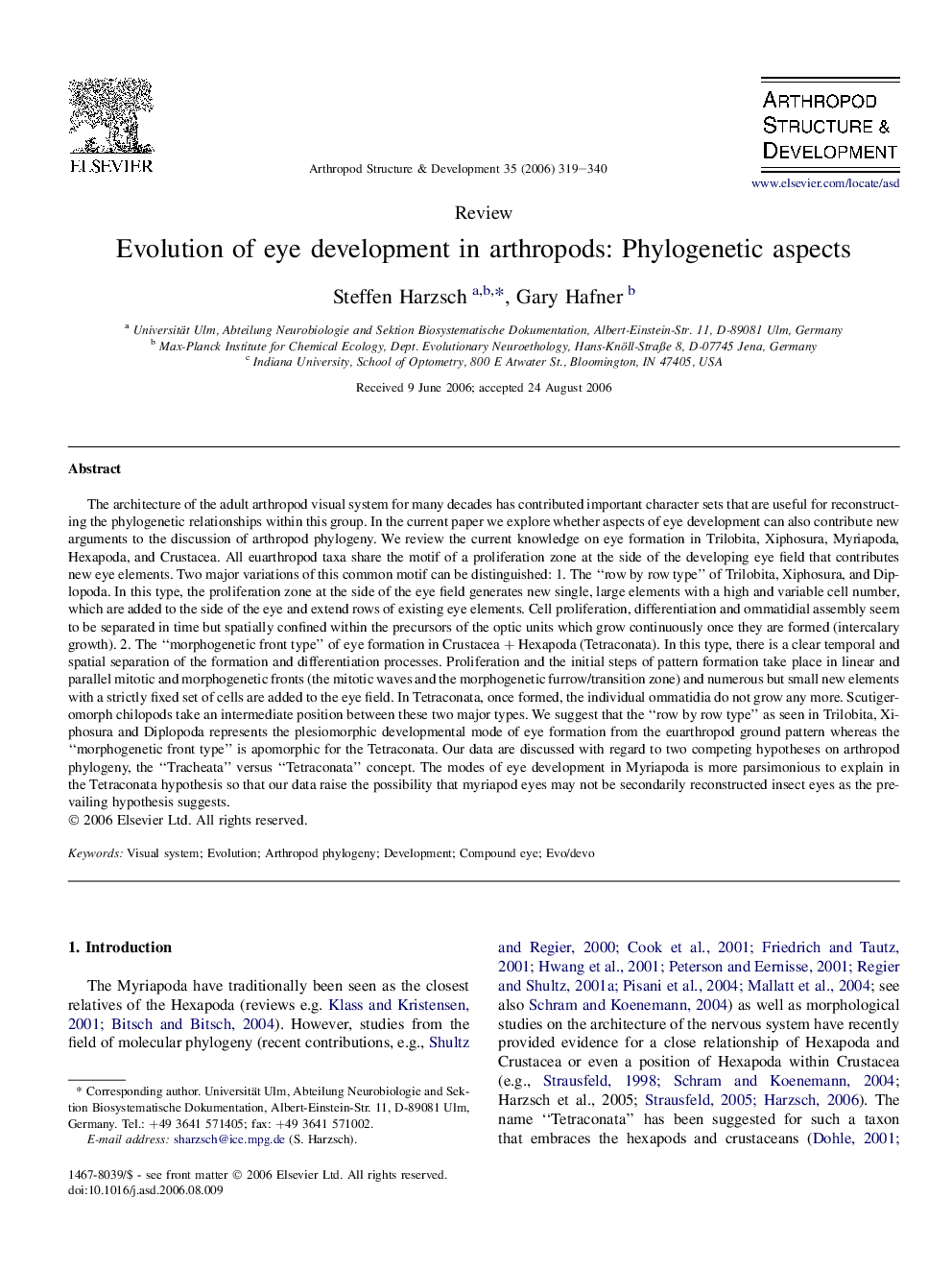| Article ID | Journal | Published Year | Pages | File Type |
|---|---|---|---|---|
| 2779039 | Arthropod Structure & Development | 2006 | 22 Pages |
The architecture of the adult arthropod visual system for many decades has contributed important character sets that are useful for reconstructing the phylogenetic relationships within this group. In the current paper we explore whether aspects of eye development can also contribute new arguments to the discussion of arthropod phylogeny. We review the current knowledge on eye formation in Trilobita, Xiphosura, Myriapoda, Hexapoda, and Crustacea. All euarthropod taxa share the motif of a proliferation zone at the side of the developing eye field that contributes new eye elements. Two major variations of this common motif can be distinguished: 1. The “row by row type” of Trilobita, Xiphosura, and Diplopoda. In this type, the proliferation zone at the side of the eye field generates new single, large elements with a high and variable cell number, which are added to the side of the eye and extend rows of existing eye elements. Cell proliferation, differentiation and ommatidial assembly seem to be separated in time but spatially confined within the precursors of the optic units which grow continuously once they are formed (intercalary growth). 2. The “morphogenetic front type” of eye formation in Crustacea + Hexapoda (Tetraconata). In this type, there is a clear temporal and spatial separation of the formation and differentiation processes. Proliferation and the initial steps of pattern formation take place in linear and parallel mitotic and morphogenetic fronts (the mitotic waves and the morphogenetic furrow/transition zone) and numerous but small new elements with a strictly fixed set of cells are added to the eye field. In Tetraconata, once formed, the individual ommatidia do not grow any more. Scutigeromorph chilopods take an intermediate position between these two major types. We suggest that the “row by row type” as seen in Trilobita, Xiphosura and Diplopoda represents the plesiomorphic developmental mode of eye formation from the euarthropod ground pattern whereas the “morphogenetic front type” is apomorphic for the Tetraconata. Our data are discussed with regard to two competing hypotheses on arthropod phylogeny, the “Tracheata” versus “Tetraconata” concept. The modes of eye development in Myriapoda is more parsimonious to explain in the Tetraconata hypothesis so that our data raise the possibility that myriapod eyes may not be secondarily reconstructed insect eyes as the prevailing hypothesis suggests.
